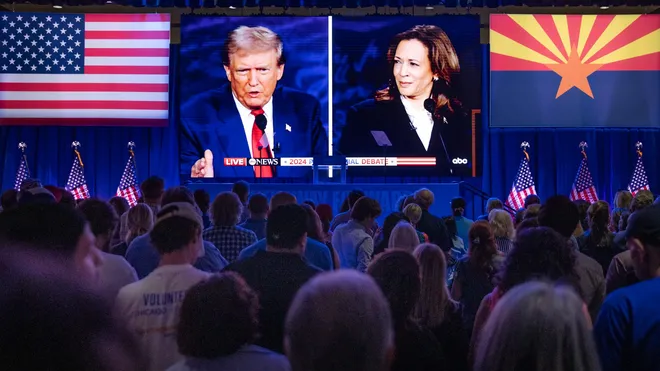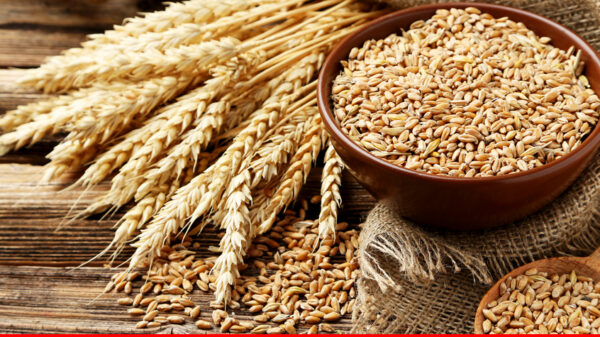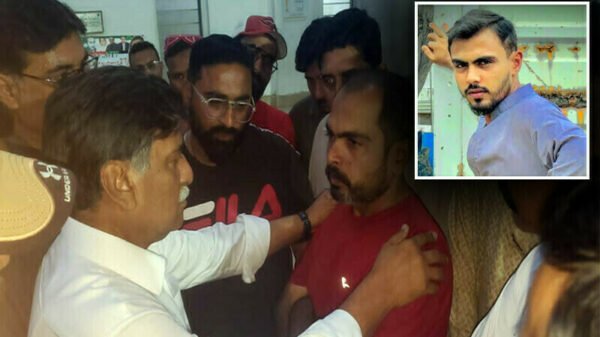The outcome of Tuesday’s US presidential election will impact over 330 million citizens, but it will likely hinge on a mere tens of thousands of voters in a few key states. This year, only seven of the 50 states are genuinely competitive, while the rest lean solidly Democratic or Republican, as indicated by public opinion surveys.
Among these battleground states, Pennsylvania, the most populous, stands out as the pivotal state that could determine whether Democrat Kamala Harris or Republican Donald Trump emerges victorious. The candidates’ strategies are heavily focused on these seven states that oscillate between the two major parties, with the majority of their ad budgets and campaign events concentrated there.
Why isn’t the election decided by the national popular vote?
Unlike other federal and state elections, the presidential race does not rely solely on the popular vote. Instead, it operates under the Electoral College system, where the winner in each state, including Washington, DC, is awarded that state’s electoral votes, which reflect population size. A candidate must secure a majority of the 538 electoral votes, which totals 270, allowing the possibility of winning without the national popular vote, as Trump did in 2016.
In the event of a tie at 269-269, the US House of Representatives would select the winner, with each state delegation casting one vote. Analysts suggest this scenario could favor Trump.
If the election unfolds as expected, Harris would have 226 electoral votes, Trump 219, with 93 still undecided.
Which states are considered competitive?
The seven states that could tip either way include the Rust Belt trio of Michigan, Pennsylvania, and Wisconsin, alongside the Sun Belt quartet of Arizona, Georgia, Nevada, and North Carolina. Historically, Michigan, Pennsylvania, and Wisconsin were Democratic strongholds but flipped to Trump in 2016, contributing to his surprise win over Hillary Clinton. In 2020, Biden reclaimed these states and also captured Georgia and Arizona, which had previously leaned Republican.
How close is the election?
The race is extremely tight. As of Sunday, data from a New York Times public poll tracker showed all seven battleground states in a near deadlock. Trump held a slim 3-point advantage in Arizona, while the other six states were averaging within a point of each other. This election appears closer than in 2020, where only a shift of 43,000 votes in three states—less than one-third of a percentage point nationwide—could have altered the outcome in Trump’s favor.
Why is Pennsylvania so crucial?
Pennsylvania boasts 19 electoral votes, more than any other battleground state, making it vital for both Harris and Trump. It is considered the likely “tipping point” state, pivotal for surpassing the 269 electoral threshold. If Harris fails to secure Pennsylvania, she would need to win either North Carolina or Georgia—both states that have voted Democratic only three times in four decades. Conversely, if Trump loses Pennsylvania, he must win either Wisconsin or Michigan, states that have supported Republicans just once since the 1980s, specifically in 2016.
Both campaigns have prioritized Pennsylvania, with Harris and Trump investing more time there than anywhere else. As of October 7, nearly $279.3 million had been spent on broadcast advertising in Pennsylvania, significantly more than Michigan, which saw around $75 million.
Why is one district in Nebraska attracting so much attention?
Most states use a winner-takes-all approach to allocate electoral votes, but Nebraska and Maine divide theirs by congressional district. In 2020, Biden won one of Nebraska’s five electoral votes, while Trump secured one of Maine’s four. The single electoral vote in Nebraska’s 2nd Congressional District, centered around Omaha, is considered competitive, although analysts favor Harris. Both parties have invested heavily in advertising within the Omaha market.
This single electoral vote could be critical. If Harris wins Michigan, Pennsylvania, and Wisconsin, and Trump takes the other four battleground states, Nebraska’s 2nd District would ultimately decide whether the election ends in a tie or if Harris secures victory.










